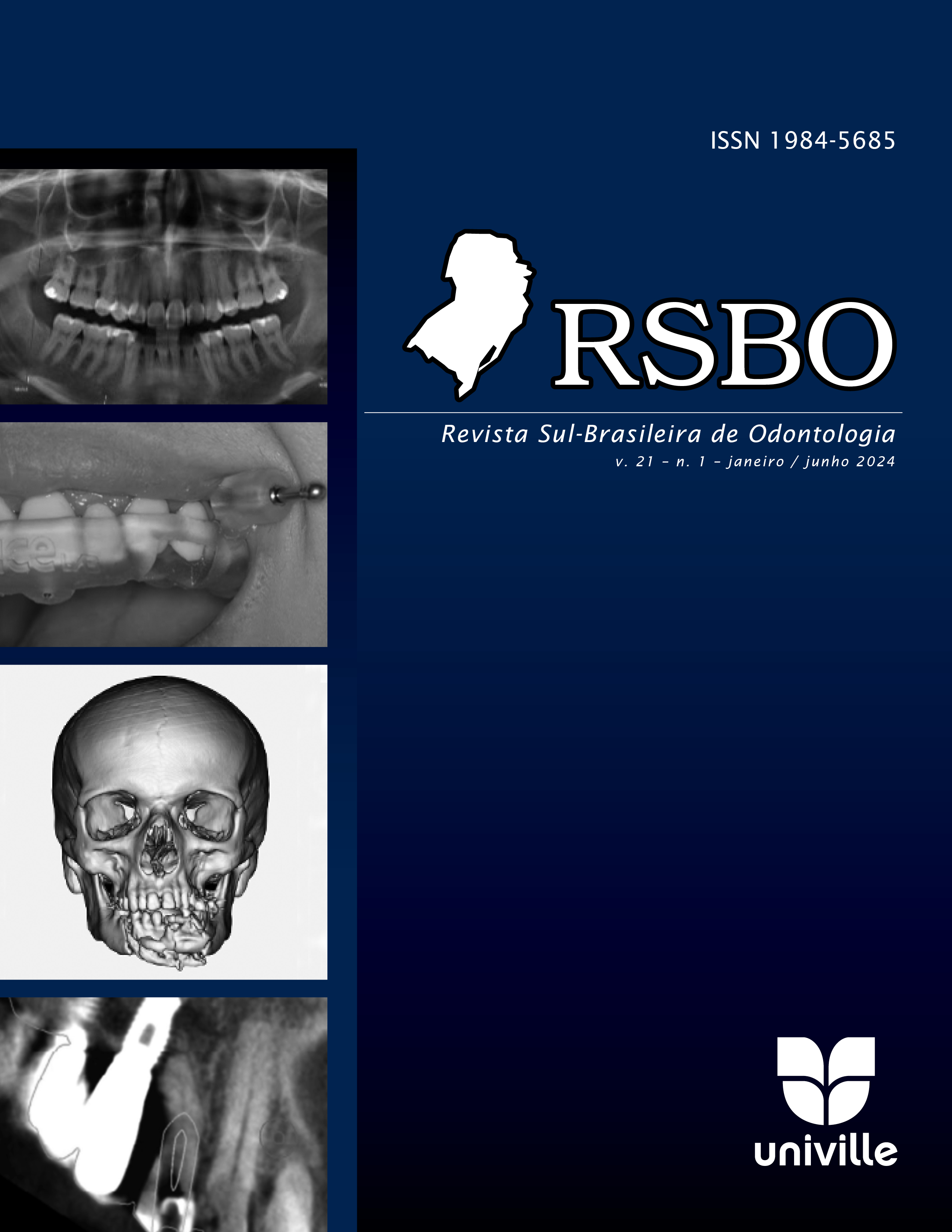Clinical conduct of dentists in the treatment of deep dental carious lesions
DOI:
https://doi.org/10.21726/rsbo.v21i1.2305Palavras-chave:
dental caries; dental care; surveys and questionnaires; dentist’s role.Resumo
Different techniques are employed to contain the carious process: non-invasive, microinvasive, and invasive, and with restorative needs. Thus, it is essential that dentists are duly updated regarding scientific evidence and perform with skill and precision the techniques proposed as treatment, being aware of the consequences and risks, and aiming at the most conservative therapy. Objective: To identify the clinical practices for the treatment of deep carious lesions used by dental surgeons of the Family Health Strategy (FHS) program of a Brazilian city. Material and methods: This was a quantitative and cross-sectional study carried out with 43 dental surgeons from the FHS program in the city of Sobral, State of Ceará, Brazil, using a Google Forms online questionnaire, containing questions related to the clinical criteria used during caries removal, deep dentin caries removal techniques, lining materials, survival rate of some treatments, in addition to sociodemographic data and questions regarding professional qualification. Results: Among those interviewed, 62.8% were aged between 25 and 30 years. Most dentists (58.7%) considered that the cavity floor should be hard at the end of the carious dentin removal, which demonstrates the non[1]adherence to Selective Carious Tissue Removal (SCTR) protocols. Only 25.6% considered SCTR a treatment with a chance of success and a 2-year survival rate greater than 80%. More than half of the interviewees (51.2%) disagreed with the maintenance of carious tissue in the axial/pulp walls of deep cavities to preserve pulp vitality. More invasive treatments were preferred in a greater proportion by dentists who work exclusively in the public sector (66.7%) compared to those who also work in the private sector (17.6%) [p=0.002], with an evident need for cariology education workshops and more studies on the topic. Conclusion: The dentists who participated in the study showed little adherence to less invasive techniques in the treatment of deep carious lesions.

